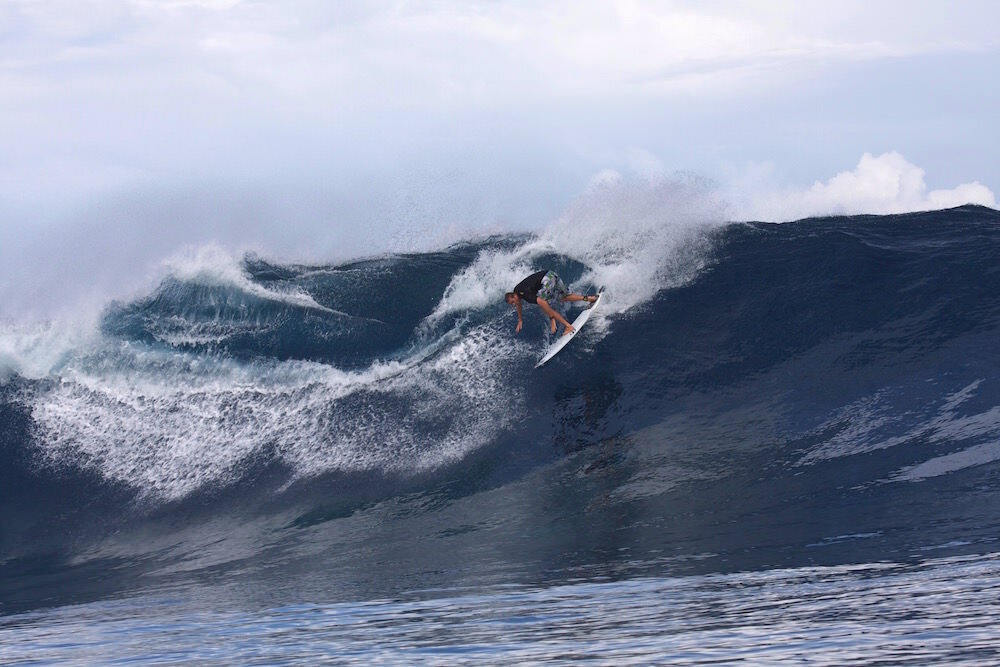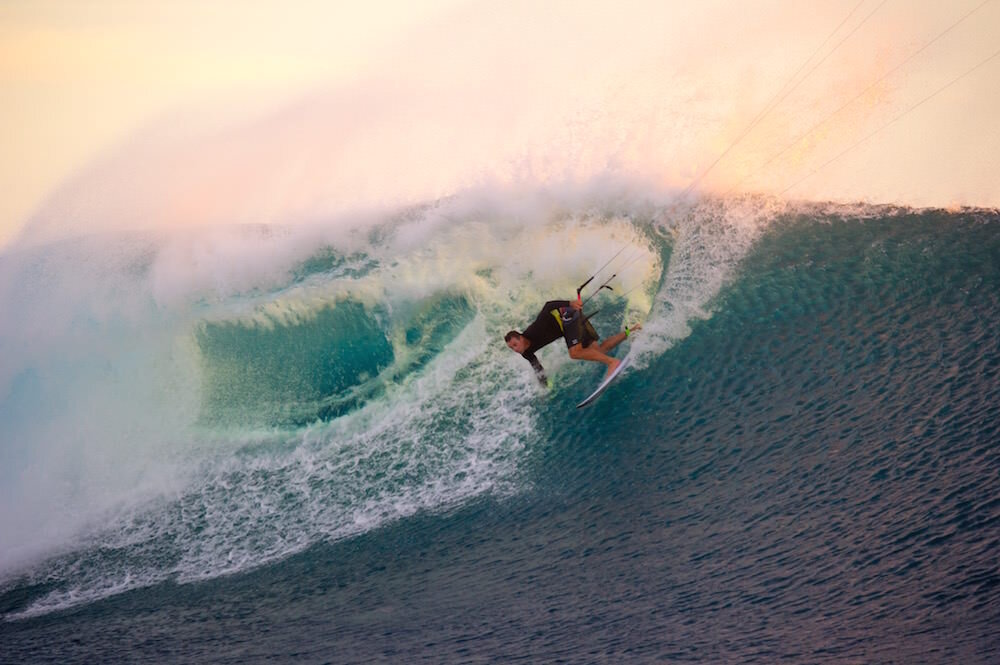UNSTRAPPED, UNHOOKED BACKHAND TOP TURN
A STEP-BY-STEP GUIDE TO FLOWING FROM YOUR BOTTOM TURN THROUGH TOP TURN
For me, the best feeling in kitesurfing is riding backside unhooked. I can really open up my whole body and make it feel like surfing. One of the key moves is a basic backside top turn. As we’ve discussed in previous articles, the bottom turn is the foundation that sets up pretty much everything. So we’ll start by setting up an unhooked bottom turn and flowing through to the top turn.
Unhooking during this move is optional but it does allow you to open up your body far more than doing it hooked-in. Side-shore to side-onshore conditions are ideal as your kite will readily drift down the line and not pull you off the wave.
Find a wave and start to set up your kite so it’s low, at around 45 degrees or roughly in the same position it would be if you were simply tacking out. It’s important to assess the wave and see where it’s going to break while finding a steady speed.
You must stay hooked in until the very last second - I never ever unhook until I have full control of my speed, position on the wave and kite position. The worst thing you can do is unhook too early, lose control and wreck the whole wave.
As you come to the bottom of the wave, the kite is at about 45 degrees or lower. If you need to make last second adjustments steer the kite up and down, rather than turning it.
Just before you unhook for your bottom turn, steer the kite up before you start going up the wave - remember the kite always needs to be 1 step ahead of you at all times and you always need to turn or steer the kite before you turn your board. As you unhook you’ll sheet in and get a burst of energy from the kite that will help drive you through the turn, use this to your advantage and remember if you create too much speed you can always reach over with your other hand and grab your chicken loop to help depower the kite.
Lower your centre of gravity even more to remain stable as you drive through your bottom turn, leaning over your heelside so your butt almost touches the water. It’s the power from this turn that will drive you back up the face of the wave and into the pocket for your top turn.
At this point the kite’s not doing anything but moving down the line so try and hold that heelside rail for as long as possible, basically until you get about three-quarters of the way up the wave. That’s when you’re going to thrust all your weight from leaning over your heelside to leaning over your toeside and really jamming off your back foot. I often put my arm in the water, it gives me a point of reference to really lean over, and for some reason makes me feel like I can balance a little bit more.
Remember you need to steer your kite back down before you start going back down the face of the wave, if your timing is out here you will get stuck at the top of the wave and lose down-the-line momentum.
The key with a good top turn is making sure that you do it right in the pocket of the wave AND the further you can have your back foot towards the tail of the board, coupled with going out in front of the wave as far as possible (without losing speed or disconnecting with the wave), the more vertical it will allow you to go. Like I’ve mentioned before with unhooking, it’s all in your head. The power of your kite is never going to rip the bar out of your hands unless the kite’s going at a different speed to you. So ultimately the key with any unhooked riding, especially backside top turn like this, is to you set your kite position up before unhooking and ensure you’re going at exactly the same speed as your kite.
These two images show me kiting and surfing the same wave, doing the same thing. I'm actually hooked-in in the first photo so you can see my body is being dragged around towards the kite, unlike when I'm surfing. I hope this demonstrates how similar kiting can look and feel to surfing but unhooking really takes it to the next level.


